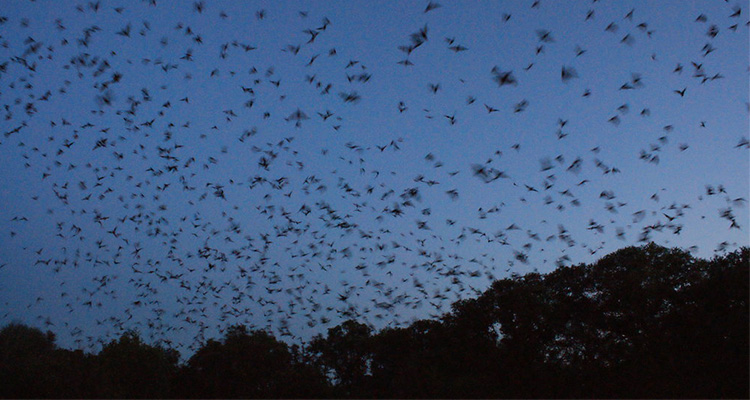If you live in the mountain state, you probably have stories, too. Out of the 1,300 bat species on earth, 12 live in West Virginia. No doubt you’ve met some of them in your underwear at midnight. But despite the frequency of such encounters, we’re easily hornswoggled by old wives’ tales about rabid, flying rats that tangle in your hair and drink your blood.
They may get bad press, but bats are a vital part of the ecosystem. Our existence would be quite unpleasant if they weren’t out there each night, doing their thing. And to bring attention to their cause, the West Virginia Master Gardeners recently presented a night of bat education at the Oglebay Institute’s Schrader Environmental Education Center with Dr. Sheldon Owen of the WVU Extension Service. Owen has spent his career studying bats and works to educate the public about this unique group of mammals. He spoke about West Virginia’s bats.
So put down those tennis rackets and pay attention. This is important.
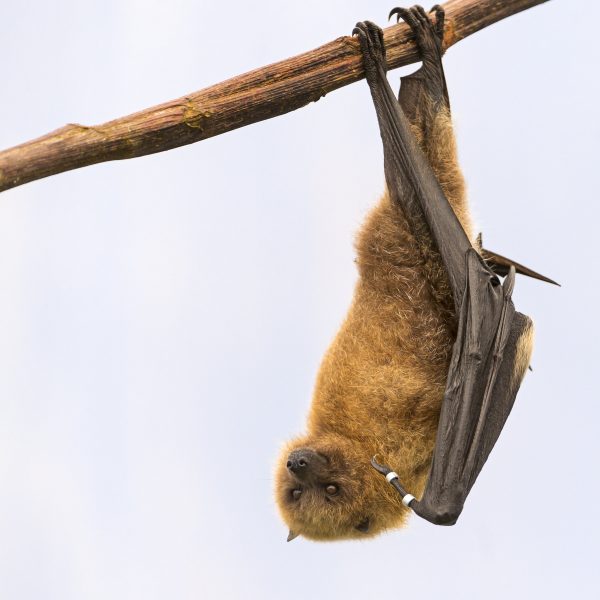
BY THE NUMBERS
For you morning skimmers who are already losing focus, here are the basics:
• 20 percent of the mammals on the planet are bats.
• They live on every continent except Antarctica.
• The smallest bat weighs 2 grams; the largest — the fruit-eating Giant Flying Fox — has a 6-foot wingspan.
• Various species eat fruit, frogs, rats and insects, among other things. West Virginia species are all insectivores.
• They also pollinate*, spread seeds and keep flying insects like mosquitoes under control.
That last point is important to remember when you’ve got a wayward bat in your house, and you’re ready to whack it with a broom. Bats really excel at insect control, so if you free that critter, it will go on to eat 6,000-8,000 insects that night. A colony of 100-some bats will devastate the mosquito population in your backyard, cutting your risk for dangers like West Nile, encephalitis and Zika, as well as those welts that keep you up all night scratching your ankle with a comb.
“We’re talking metric tons of insects off the landscape each night,” Dr. Owen said. More bats means fewer pests; fewer pests means less pesticide and, ultimately, cheaper produce for the consumer.
According to Owen, West Virginia is prime bat habitat. Our heavy forests with thick canopies, caves and clear-cut spaces appeal to our various species. Some migrate, while others move to winter hibernacula in caves, many of which are found in the eastern part of the state in counties like Grant and Pendleton.
* The tequila agave plant is pollinated by the lesser long-nosed bat, which has recently come back from the brink of extinction. Cheers to the Endangered Species Act!
HERE’S THE STRAIGHT GUANO
Let’s look at some bat myths and truths.
Bats are flying mice.
False. Bats are not rodents. They are of the order Chiroptera, meaning “hand wing.” The name alludes to the elongated fingers that support the leathery membrane of the wings. While our North American insect-eaters, the microbats, may look like rodents, the fruit-eaters — megabats — in Australia, Indonesia and New Zealand have faces that look distinctly canine. Frankly, they’re downright adorable.
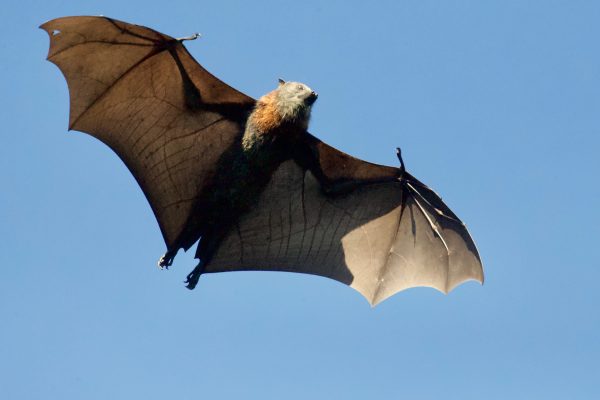
Bats are blind.
False. Bats can see. However, they rely on echolocation to navigate and hunt. Bats emit sound waves and interpret the signal as it bounces back. They weave through heavy cover, amidst branches and around wires with ease. In this video, Sir Richard Attenborough explains the mechanism. (Start at 1:08 if you’re eating breakfast. Trust me.) Most echolocation is well above our hearing range. But though it’s high frequency, it’s not a quiet sound at all.
“If we could hear it, it would probably deafen us,” Dr. Owen said. “It’s around 100 to 110 decibels. We’re talking about a jackhammer.” This bat sonar is a powerful sense that works better than vision.
Bats get stuck in your hair.
Almost never. It’s possible that an exhausted or baby bat might make contact with a person. Normally, they avoid us — and our hair — at all costs. Their echolocation keeps them well out of our way, as anyone who has ever tried to catch a bat knows. Just ask this foul-mouthed Irishman.
Bats drink blood.
True, but … only three species out of 1,300 do. There are three types of vampire bat in Latin America, and they don’t attack people. Horses and cattle are usual targets, and the bats consume about a teaspoon of blood.
Bats have rabies.
Occasionally. Bats are mammals, and all mammals can be infected. Fortunately, only one half of one percent of bats have rabies, so the odds are slight. That said, Owen cautioned that we should always place a protective barrier between us and an injured bat. Use gloves if you must handle one. And keep pets away from them; dogs and cats may be bitten if they find an injured bat on the ground. Vaccinate pets. Contact the health department if you find a bat has been in your bedroom while you slept.
This happened to my son when he was six days old. A baby bat was in his room all night. We were so anxious to get it out of the house that we opened a window and set it free. Our pediatrician was not happy because there was no way to know if the bat had been infected. Bat teeth are so small that a bite may not be visible. While it was highly unlikely, the American Academy of Pediatrics advised us to give him the rabies vaccine. They told us he was probably the youngest person ever to receive it, and there were no ill effects. Fortunately, the process no longer involves 21 painful injections in the stomach. It’s a series of three doses in the arm over a period of weeks. People in the hospital elevator would see the Band-Aids and coo at him.
“Poor baby! Is he sick? What’s he got?”
“Rabies,” I’d say. They’d usually get off on the next floor.

THREATS
Five of our 12 West Virginia species are threatened or endangered. Problems include habitat loss or changes, such as deforestation. Also, the use of pesticides not only decimates bats’ food source, but the chemicals also bioaccumulate their bodies as they consume treated insects. Additionally, it’s important to note the rise in pesticide-resistant insects — the more we spray, the tougher the bugs get.
In addition, many cave-dwelling species are succumbing to White Nose Syndrome. The fungus was discovered in 2006 in a New York cave. It easily spreads among hibernating colonies and is 95-97 percent fatal. Studies have shown the disease can wipe out 90 percent of a site’s population in fewer than five years.
“Our [endangered] Indiana bats hibernate in about seven caves across the United States,” Owen said. “Seven caves, all of the population. So if we start losing even one of those caves, it’s a significant impact on the bat population.” It doesn’t help that bats are slow reproducers. They have one pup per year.
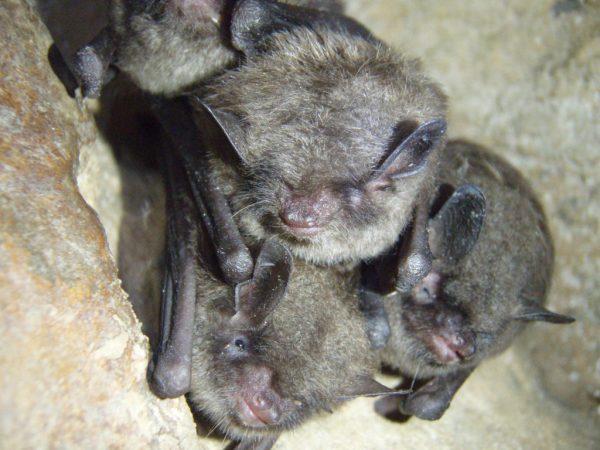
So why should we care about White Nose Syndrome? Won’t it help keep the bats out of our attics?
It won’t, because attic-roosting bats don’t get the fungus. Cave bats get it. More importantly, we need all our bats because insects find us — and our crops — tasty. Fewer bats mean more pests, more pesticides, more chemicals in our ecosystem and more expensive produce. Picture yourself, your ’skeeter bites smeared with Calamine lotion, paying $7.50 for a Round Up-flavored cucumber.
We really need bats.
WHAT YOU CAN DO
Moment of honesty: I scream like a banshee when there’s a bat in my house. Nevertheless, I try to be a good ambassador for the species. This can be as simple as leaving an old tree on your property for bat habitat. Some even roost in leaf litter, so feel free to ignore that yard work.
Built a bat house. It’s simple and far better if they roost outside than in your attic. Besides, you’ve already got squirrels up there, and it’s getting crowded.

One of the biggest ways to help bats is just to leave them alone. White Nose Syndrome is often spread via cavers’ boots and clothing, so clean your spelunking gear thoroughly. Better yet, avoid caves with bat populations, and don’t disturb them when they’re hibernating — it can mean the difference between life and death for the colony.
And lastly, be a bat advocate. This doesn’t mean you have to love them, but do stay informed. Learn why they’re so important and respect the tremendous role they play in our world. Spread your knowledge. Tell people why bats are cool.
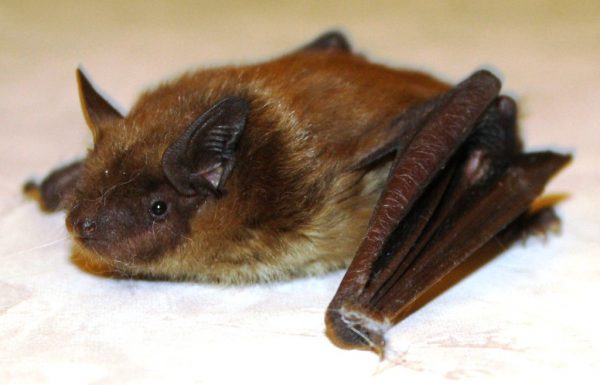
• Laura Jackson Roberts is an environmental writer and humorist in Wheeling, West Virginia. She holds an MFA in Creative Writing from Chatham University and serves as the northern panhandle representative of West Virginia Writers. Her hobbies include hiking, travel and rescuing homeless dogs. Visit her at laurajacksonroberts.com.


